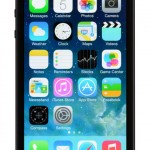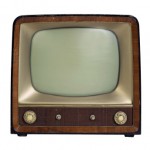Marketers have historically worked to get noticed in the marketplace – it’s the nature of their role on the team. Identifying that next big thing, before the competition, can mean the difference between being a market leader or a never-was.

Advancements in technology over the years have helped marketers reach more customers in pursuit of market share, and as each new media arrives it makes its predecessor old.
Identifying the right technology is half of the formula; knowing when to adopt is the other. Too early and nobody gets it. Too late and nobody cares. Remember the guy with the first fax machine? He couldn’t wait for the second guy to buy one.
History has shown advancements in technology dramatically impact outbound marketing – marketing messages that are broadcast, aka “multiplied,” to reach more consumers. It also teaches what we can continue to expect in the digital future.

The Technology of Print
When Gutenberg invented the printing press in 1450, suddenly one message could be multiplied, replacing verbal communications and the need to tell that one story over and over again. Even though print was new and innovative, adoption was slow because the masses didn’t have access to the technology or didn’t know how to use it (most consumers could not access books or read). Not until the technology became widespread and easily accessible did print reach critical mass.
Three hundred years later (1730), print magazines emerged as the first public media, enabling businesses to promote themselves within a collection of content. Repurposed print advertising emerged as poster advertising in 1839 and adapted to smaller public spaces with high traffic and frequency, yet larger billboard advertising wasn’t available for rent for another 30 years (1867). Over time models emerged that demonstrated opportunity meeting application, generating profitability (ROI).
In 1878, Bell invented a “new” type of media called the telephone, connecting two people over a wire from a distance. Radio connected one-to-many (40 years later, in 1920) over a greater distance with an antenna. Six years later, in 1926, television transmitted sound with moving pictures.
Like print, radio created a marketing vehicle for business via sponsored content (1922), yet the first television advertising didn’t debut until 1941 – nearly 20 years later. New models for new media came faster than print, although it was nearly a century before telemarketing emerged as a strategic use of the telephone in 1970.
In 1972, 500 years after its invention, print was declared dead for the first time. Television – the newest new media – was named the culprit.
A year later (1973), digital was born with the mobile (handheld) phone and people began connecting on the move. Eight years later (1981), personal computers helped marketers manage consumer data on a PC, and within three years, we all began to create digital content (1984) on a Mac. Technology multiplied – again – to provide more for the masses via desktop publishing (1985) and SMS messaging (1990) on the millions of increasingly functional phones. The same scale came to television in 1990 as satellite brought more content to a larger audience on-demand.
Enter the Internet
In 1989, Berners-Lee invented the Internet. Only two years after academia adapted this new media (1992), marketing interjected spam messages (1994) within their message board content. Internet directories created to catalog content (1994) initiated search engine marketing strategies (1995) to influence the listing order provided to “users.”
User-generated content was self-published (like empowered desktop publishers) by consumers in 1998 with their own opinions and agendas (aka bloggers), and the customer began sharing information, engaging brands in new ways, and creating value for other customers asking, “What’s in it for me?”
With this, media and technology shifted to inbound marketing –bringing the consumer to the brands – at an incredible speed.
- 2003: Social media emerged to provide a community of different types of users.
- 2005: Search engines personalized results based on preferences.
- 2006: E-commerce expanded the marketplace.
- 2007: Mobile advanced with increased bandwidth for music and video.
- 2008: Apps extended the functionality of handheld communications.
- 2010: Email marketing reached 90 percent spam.
- 2011: Social sharing enabled customers to provide ratings and feedback.
- 2012: Geo-targeting placed ads based on customer location.
- 2013: Augmented reality supplemented the customer experience.
History shows we can only expect this rate to increase. Technology is already developing faster than consumers can adopt, and the costs to utilize them all – analog and digital – are more than a business can invest. Decisions must be made about which channels to utilize and how much is enough to reach your target markets. 
As marketers work to make sense of their digital future, here are the things we know from our analog past.
Lessons From Print
- No matter how interesting or unique, until a technology becomes widespread and accessible, it will not become a media communications channel.
- One media will divide into more media, and content can adapt to any container.
- Over time, models will emerge that demonstrate best practices and ROI.
Lessons From New Media
- “New” media is subjective – there’s always something new.
- The evolution of a new technology into a new media channel takes time.
- Timing is everything.
Lessons From Digital
- The consumer is mobile and accessible.
- The consumer’s data is readily available to make informed decisions and to deliver targeted messaging.
Lessons From the Internet
- The time needed to exploit a channel for marketing communication has been reduced dramatically.
- Most accommodate a business presence and are designed to include a marketing opportunity.
- Earned media is not paid media: don’t get the two confused.
Remember, fortune favors the brave. The future of marketing belongs to the same people who have owned it to this point: the visionaries, the innovators, and the early adopters. The ones who can learn from the past and analyze the present are best prepared to anticipate “what comes next” before the rest of the crowd.
To stay current and on top of "what comes next", subscribe to Online Marketing Institute's award-winning eLearning Library, which offers hundreds of digital marketing classes to choose from.

